Select a Title Below to Navigate Directly to an Article
- Orchid & Dirty Ashtray Awards
- Positive Momentum and Challenges
- Influencing policy discussions at COP
- Exposing the Tobacco Industry’s Tactic: The Alarming Rise of Electronic Smoking Devices
- Global Funding Shortfall Undermines Tobacco Control Success
- Brazilian delegation meets tobacco industry associations during COP
- Harnessing the power of Article 19 of the WHO FCTC to increase resources for tobacco control and hold Big Tobacco accountable
- Tobacco harm reduction is about population health, not industry profits

ORCHID & DIRTY ASHTRAY
ORCHID & DIRTY ASHTRAY
Orchid Award
To SEARO region- For informed and constructive interventions that have supported progress across the range of issues under consideration by the COP.
HONORABLE MENTION
To all Latin American countries that supported the Human Rights Decision; an effort led by Ecuador and co-sponsored by Brazil, Panama, Palau and New Zealand.
DIRTY ASHTRAY
To Guyana – For repeated grandstanding, time-wasting interventions that ignored legal advice on the content of the FCTC and rules of procedure of the COP.

Positive Momentum and Challenges
Everyone must have felt a little more positive and like there was a light at the end of the dark tunnel in both Committees today. Day 4 started off slow and steady, but sometimes that’s what it takes to win the race. After some back and forth, both Committees A and B seemed to have shared similar views on key agenda items which resulted in some great outcomes. Discussions during both committees highlighted that tobacco control is a sustainable development issue which has an undeniable impact on health, environment, human rights, and the economy. With potential new decisions adopted by COP 10 relating to the environment and human rights, there is greater responsibility on Parties and civil society to increase our efforts to build intersectoral networks to support FCTC implementation.
Although Parties made some good progress today, it seems like Articles 9 and 10 are sticking points and it would be really nice to see Parties negotiating in good faith and taking note of the sound and valid legal advice and the parameters of what is being considered so we can finally move towards a consensus. We only have one last full day for deliberations and quite a few items on the agenda to get through, notably the specific guidelines on Article 13 - the agenda item that just keeps getting bumped around. Adopting the Article 13 specific guidelines and a review process for implementation of the FCTC will be of critical importance tomorrow, so let’s work together to ensure that the second to last day at COP10 counts!

gatc RESOURCES

Friday Events

13:30 - 14:45

Innovative Financing Mechanisms to Strengthen WHO FCTC Implementation

Addressing Big Tobacco Influence: Advertising and Promotional Tactics Used by Tobacco Industry to Target Youth
Influencing policy discussions at COP
Delegates at COP need to be aware of industry tactics and messages designed to influence their opinions and actions.
A newly-published brief from STOP shows how the tobacco industry has exploited tobacco harm reduction to influence policy discussions, including at COP.
Tobacco Tactics also published a new resource on recent industry interference activity around COP & MOP: Industry Influence on COP10 & MOP3. Previous interference around COP 9 & MOP 2 is detailed on a separate page, and both can be accessed via the landing page on COP & MOP. A further timeline details the history of interference around previous COP & MOP events, from 2012.

Author:
Dr. Raouf Alebshehy, Managing Editor, Tobacco Control Research Group (TCRG), Department for Health, University of Bath

Exposing the Tobacco Industry’s Tactic: The Alarming Rise of Electronic Smoking Devices
The tobacco industry’s foray into electronic smoking devices (ESDs), which include electronic cigarettes and heated tobacco products, has sparked concern and alarm among public health advocates. These companies, known for their track record of manipulating scientific research and policies to their advantage, have extended their influence into the rapidly growing market of e-cigarettes, employing various tactics to maintain and expand their hold on the nicotine business.
One of the tactics used by the tobacco industry is aggressive lobbying, where companies utilize their vast financial resources to influence policymakers and mold regulations in favor of the ESDs market. By funding political campaigns and lobbyists and cultivating relationships with members of parliament and their advisors, they strive to ensure that ESDs remain a lucrative business for them, despite the mounting evidence of associated health risks. This results in weak or industry-friendly regulations that fail to adequately protect consumers, especially youth who are increasingly drawn to e-cigarettes.
The tobacco industry disguises its promotion of ESDs under the guise of advancing tobacco harm reduction, branding these products as “reduced-risk” in contrast to cigarettes, which it now classifies as “high-risk products.” They market ESDs aggressively as a “safer alternative” with enticing flavors and novel features, exploiting regulatory gaps in jurisdictions with less developed regulations, to target young people who might not otherwise have initiated tobacco use.
The implications of the tobacco industry’s interference in promoting electronic smoking devices are far-reaching. Public health is put at risk when the use of harmful, addictive products is promoted and regulations meant to protect consumers are overrun by industry objectives.
Apart from lobbying, the tobacco industry has been targeting youth through advertising strategies that appeal to the younger generation, often downplaying the risks while portraying ESDs as trendy, safe, and a desirable alternative to smoking. This manipulation contributes to the rise of popularity of these products among adolescents. The use of ESDs among the youth is on the rise, and because of the tobacco industry’s duplicitous marketing tactics, young people are fed with misinformation about the addictive nature of these products. The portrayal of ESDs as trendy and harmless not only creates a false sense of security but also entices impressionable minds into experimenting with these products.
Moreover, the tobacco industry uses front groups to advocate for its interests and promote ESDs. These groups attempt to shape public opinion in favor of industry-friendly policies. Reminiscent of the past efforts to downplay the health risks of cigarettes, advocates are warned about the industry’s history of manipulating scientific research and funding studies and experts to create doubt and controversy concerning ESDs.
The implications of the tobacco industry’s interference in promoting electronic smoking devices are far-reaching. Public health is put at risk when the use of harmful, addictive products is promoted and regulations meant to protect consumers are overrun by industry objectives. To counter these tactics, it is essential for policymakers and public health advocates to be vigilant and to prioritize the well-being of the public over industry profits. Implementing stricter regulations, protecting public health from the interference of the tobacco industry, and comprehensive public education are crucial steps in mitigating the influence of the tobacco industry and safeguarding the health of the population, particularly the younger generation who are most susceptible to ESDs.


Authors:
Irene Patricia Reyes, Tobacco Industry Denormalization Program Officer
Val Bugnot, Communications Manager

Global Funding Shortfall Undermines Tobacco Control Success
According to the Funding Gap Tool developed by the Convention Secretariat, tobacco control faces a yearly global funding gap of 8.4 billion USD to implement comprehensive programs. This funding gap is dwarfed in comparison to the global economic and health costs of tobacco use, which equate to an astonishing sum of approximately 2 trillion USD. Comprehensive tobacco control measures are known to be cost-effective, and are projected to save governments billions of dollars in health care costs annually as well as to greatly boost economic productivity from a healthier working population. There is clear empirical evidence that these economic and health burdens disproportionately affect low- and middle-income countries (LMICs), where roughly 40% of the economic burden from tobacco use is expected to fall. Moreover, this proportion is quickly increasing, which will further worsen health inequities globally and within countries. To stem this shift, significant action is needed to strengthen policies and programs based on the provisions of the FCTC.
Development assistance is useful for jumpstarting sustainable tobacco control programs in under-resourced contexts or where governments are yet to fully recognize the enormous contribution that tobacco control has on economic development, but it cannot fill the funding gap. Thus, a mix of international resources, such as multilateral and bilateral aid, is essential to mobilize domestic resources for tobacco control measures. During and after an initial funding phase, champions at the national level must advocate for effective domestic resource mobilization to improve sustainable funding for national tobacco control programs. One effective pathway would be to allocate a percentage of new tobacco excise tax revenues to supporting tobacco control programs over the longer term. Not only is tobacco taxation known to increase government tax revenue and save money by decreasing the health and economic costs of tobacco use, but with coordination between ministries of health and finance, revenue generated from these taxes can be used to fund tobacco control programs. This pathway would satisfy Parties’ obligations under Article 6 and support other key features of treaty implementation. Donors should strongly encourage governments to take these actions when they provide funding assistance.
There are many ways international and country-level advocates can work together to push for sustainable and well-resourced tobacco control programs at the national level. The tobacco control community has developed various tools to support advocates in making the case for greater investment, including but not limited to the following:
- Secretariat funding tool: The Convention Secretariat developed a tool based on an indicator to measure the global funding gap for FCTC implementation required by the Global Strategy to accelerate tobacco control. In addition to this global estimate, an analysis was conducted that resulted in country-level estimates of the current levels of funding available, as well as the necessary amount required to fully implement a tobacco control program.
- Official Development Assistance (ODA) Flows Report for NCDs: The Global Alliance for Tobacco Control (GATC) developing g a report on ODA flows for NCDs and risk factors. The report will analyze the Organization of Economic Cooperation and Development’s (OECD) and Creditor Reporting System (CRS) data to highlight total aid invested in NCDs.
- Budget Advocacy toolkit: The GATC developed a budget advocacy toolkit to provide guidance to civil society advocates and community-based organizations working in the field of tobacco control and non-communicable disease (NCD) prevention and control on how to engage in budget advocacy at the national and/or subnational levels.
These tools combined with effective advocacy strategies will assist global and country level advocates to convince their governments to make beneficial investments in FCTC implementation. Tobacco control efforts have been deprioritized and under-resourced for far too long.



Authors:
Nicole Nguenha, Leslie Rae Ferat ,Global Alliance for Tobacco Control (GATC), Ottawa, ON Canada
Dr. Jeff Drope, Johns Hopkins University (JHU), Baltimore, Maryland USA
Brazilian delegation meets tobacco industry associations during COP
A committee of parliamentarians from tobacco-growing areas in Southern Brazil is in Panama and has been lobbying the Brazilian delegation in favour of the industry.
This committee has had “daily debriefing sessions” during the COP, led by the head of the Brazilian delegation, Carlos Henrique Abreu e Silva. During one of these sessions, on Wednesday evening, representatives of various Brazilian industry associations were also present.
Abreu e Silva is also due to meet the Tobacco Growers’ Association of Brazil (Afubra) and the International Tobacco Growers Association (ITGA) today (Thursday 08/02) – despite some strongly-worded criticism of the Brazilian delegation by the president of ITGA.
These meetings are in contravention of the WHO FCTC mandates and guidance – not least Article 5.3, which urges Parties to protect their public health policies from commercial and other vested interests of the tobacco industry.

Author:
Tom Gatehouse, Research Assistant, Tobacco Control Research Group (TCRG), Department of Health, University of Bath

Harnessing the power of Article 19 of the WHO FCTC to increase resources for tobacco control and hold Big Tobacco accountable
The tobacco industry has long used legal threats to intimidate governments into weak implementation of the treaty’s most effective measures. It is time to shift the burden of tobacco use onto the industry, compel it to respect the rule of law and make it pay for the harms caused by its deadly products.
The WHO Framework Convention on Tobacco Control (WHO FCTC) contains a provision that can advance all of the lifesaving measures contained in the WHO FCTC: Article 19 on liability. Parties can use Article 19 to hold the tobacco industry liable for the harm it has caused and enable governments to recover the high costs of tobacco use through their legal systems.
Beginning at COP4 and continuing to COP7, Parties developed and adopted tools to support the implementation of Article 19. One is a practical, online toolkit, which identifies three scenarios for Parties to strengthen their civil liability mechanisms, including facilitating access to justice for victims of smoking-related disease (on both a collective and individual basis); strengthening healthcare cost recovery suits for governments, and enforcing existing tobacco control measures or laws like injunctive relief. The toolkit also includes a “decision tree,” which can assist countries in plotting their path to successful litigation.
Article 19 is one of the most powerful but underutilized articles of the treaty, despite the fact that legal actions against the tobacco industry could deter its abusive and intimidating behavior worldwide, including in intersectoral areas such as the environment, human rights and the financial sector. There are liability actions underway in Brazil, Canada, the United States and Ireland. And, in addition to litigation, there are other measures such as compensation, administrative and/or quasi-criminal measures that could be used to advance tobacco control and hold the tobacco industry to account. In taking such measures, Parties could also shift public perception about the tobacco industry and the need for tobacco control.
The draft decision for the COP 10 agenda item on, “Implementation of Article 19 of the WHO FCTC: Liability”, was proposed by the Islamic Republic of Iran, Oman and Pakistan, with co-sponsors: Brazil, Djibouti, Ghana, Iraq, Kuwait, Panama, Qatar, Saudi Arabia, Syrian Arab Republic and Yemen). It includes provisions to:
●Adopt a methodology to advance liability-related measures, particularly for those countries where judicial proceedings are not the best recourse.
●Establish liability as a cross-cutting theme in tobacco control and a recurring agenda item for the COP.
●Generate “lessons learned from tobacco liability” materials for possible use in intersectoral areas such as the environment, human rights and/or the financial sector.
We stand with the 85+ organizations and experts, and more than 30,000 petition signers from all over the world, who have signed letters in support of decisive action relating to liability at COP in urging all Parties to adopt the decision.




Authors:
Daniel Dorado, Tobacco Campaign Director, Corporate Accountability, Quito, Ecuador
Deborah Sy, Head of Global Strategy and Public Policy, Global Center for Good Governance in Tobacco Control (GGTC), Thailand
Keltie Vance, Deputy Campaigns Director, Corporate Accountability, Boston, USA
Kelsey Romeo-Stuppy, Managing Attorney, Action on Smoking & Health, Washington D.C., USA
Tobacco harm reduction is about population health, not industry profits
‘Harm reduction’ is an established public health strategy, referred to in the WHO Framework Convention on Tobacco Control (WHO FCTC) in the context of a range of strategies that “aim to improve the health of a population.” The general obligations of the WHO FCTC require Parties to adopt and implement effective measures for preventing and reducing tobacco consumption and nicotine addiction. In other words, harm reduction is at the heart of the treaty. Yet in recent years, amid falling global cigarette sales, the term ‘harm reduction’ has been co-opted by the tobacco industry.
The simplistic, profit-driven approach promoted by the industry is to allow widespread, unrestricted access to addictive, harmful products, rejecting strict regulation. In short, tobacco harm reduction at an individual level, often the focus of the industry’s messaging, is not the same as harm reduction at a population level– the purpose of the WHO FCTC.
That hasn’t stopped the industry, its allies and other corporate interests using ‘tobacco harm reduction’ positioning as a tactic to try to influence policy at the global as well as the national level, including at COP 8, COP 9 and this week at COP 10.
While policymakers may hear industry players say that these products are aimed at adult smokers, the industry’s marketing casts a much wider net. Tobacco companies reach a far broader spectrum of consumers than current, adult smokers by using trendy social media influencers, for example, and sponsoring sports and music events. The industry’s messaging to investors paints a different picture, too. British American Tobacco talks about growing the ‘nicotine consumer pool’ and its own research suggests that at least half of those using its Vype e-cigarettes and Velo and Lyft nicotine pouches had never previously smoked.
Attracting new customers has always been a strategic necessity for an industry whose cigarettes kill at least half of all lifetime users. Historically, it has targeted children and young people with cigarettes, and is now doing the same with products like e-cigarettes, heated tobacco products and nicotine pouches. Research suggests that a growing proportion of youth and adult non-smokers are being lured into nicotine addiction via products that are undeniably harmful and addictive.
Worryingly, a systematic review of global evidence by researchers at Australian National University found that “young never-smokers and non-smokers who use e-cigarettes are about three times as likely as non-users to start smoking tobacco and to become regular smokers.”
Article 5 (2)(b) obliges parties to develop appropriate policies for preventing and reducing not just tobacco consumption but also nicotine addiction. It is clear that nicotine addiction is rapidly increasing, particularly among youth.
Critically, existing evidence on the use of these devices for quitting in managed, clinical settings does not apply to the population level where they are sold as commercial products in often inadequately regulated markets, which is what the industry and its allies lobby for. Population studies conducted in natural, uncontrolled settings do not indicate that electronic products assist smokers in quitting. In addition, there is growing evidence of dual and poly use, which can be linked to higher tobacco dependence.
The WHO recently raised the alarm about the products with a December call to action for governments, as did the US Surgeon General.
The evidence on these products is far from conclusive. We don’t yet know enough about their impact on health. And tobacco control policy needs to be evidence-based. Self-interested industry “science“ has never been a credible source of evidence. The industry is not the solution to the global tobacco epidemic it helped to create and still perpetuates by making and selling hundreds of billions of cigarettes every year.
For more recent industry interference activity around COP & MOP, see this new resource from Tobacco Tactics: Industry Influence on COP10 & MOP3
Previous interference around COP 9 & MOP 2 is detailed on a separate page, and both can be accessed via the landing page on COP & MOP. A further timeline details the history of interference around previous COP & MOP events, from 2012.
A brief, published by STOP, shows how the tobacco industry has exploited tobacco harm reduction to influence policy discussions, including at COP.
A recent WHO report confirmed that there are more than a billion tobacco users in the world today and comments to media and investors confirm big tobacco expects that it will continue to sell cigarettes for decades to come.
Adopting the tobacco industry’s preferred policies, that they portray as tobacco harm reduction, is more likely to facilitate industry interference in core tobacco control policies designed to reduce tobacco use and nicotine addiction and protect youth, and will perpetuate the industry’s harm to health, society and the environment.
Policymakers and the public should not be fooled.


Authors:
Jorge Alday, Director, STOP, Vital Strategies
Mark Hurley, Vice President of Global Communications, Campaign for Tobacco-FreeKids
Contact US
Global Alliance for Tobacco Control
c/o HealthBridge
1 Nicholas St, Suite 1004
Ottawa, ON Canada K1N 7B7
Phone: 1 613 241 3927
Email: info@gatc-int.org



